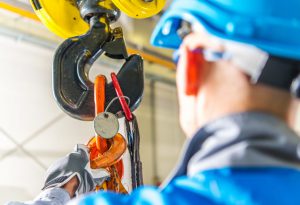Lifting equipment is a part of everyday life in Australian industrial workplaces. From forklifts at warehouses to cranes on construction sites, this equipment does everything from helping to lift heavy loads or reach high places for repairs. This equipment keeps many people safe as they do their jobs, but it isn’t without risks and hazards.
That’s why the Australian standards of lifting equipment keep everyone on the same page with safety requirements that benefit everyone involved. It can even be said that one of the Australian standards of lifting equipment is the Stenhouse lifting.
You’d need sturdy equipment for several purposes, including construction, and you’d need to prioritize worker safety. These are some of the ways you’d keep your workers safe by adhering to Australian standards lifting equipment:
Table of Contents
It Encourages Consistent Training To Keep Workers Safe
A lack of training is one of the most common causes of accidents in any industry, and employees using lifting equipment are no exception. The Australian standard lifting equipment requires that workers receive regular training on safe operating procedures to ensure they use their equipment safely.
It ensures that operators are aware of all hazards associated with using the equipment and avoid them during daily operations. The standard also requires that staff undergo training by qualified persons who have taken relevant training courses. It would ensure they know how to conduct themselves properly while teaching others how to do so.
Electrical Equipment
Under Australian standards, electrical equipment must be tested and certified annually. Certification only carries the same weight as your annual test report, so if anything changes with your electrical equipment, such as a cable being cut or damaged, you must get it re-tested immediately by an accredited company.
Electrical equipment must not be used in wet conditions as part of the guide to ensure worker safety. If water does come into contact with this equipment and causes an electric shock, it could result in severe injury or death for those operating the machinery.
You can put some measures in place to ensure that everyone using a machine is safe. You can start by using labels to tell workers how to operate machines safely or use pre-tamper guards.
Mechanical Safety
The equipment must be able to prevent the load from falling, even if it gets stuck. The lifting equipment also needs to be able to hold up under all conditions, and if there are any malfunctions, they should not affect its ability to hold or secure a load.
The device should also prevent people from being injured by the load. It includes protection for workers using the lifting devices and other persons around.
Lifting Accessories, Including Chains And Ropes
Chains and ropes are essential for lifting, but they can also be dangerous if you don’t select and use them according to their rated capacity.
If you’re using a chain, you need to know that particular chain’s working load limit (WLL). If your chains have been damaged, replace them immediately because this could cause a significant incident. Inspect your rope regularly, if you’re using one, for damage such as cuts or frays, and replace it when necessary.
The Stability And Strength Of The Lifting Equipment
The lifting equipment must be able to support the load safely. It means it must be able to safely and efficiently support the work. If a tool is too small for the job, it won’t work well, and you will have to keep moving it around, making your work slower and more complex.
If it’s too heavy, you might not be able to do what needs doing because there’s no way for you to get close enough without putting yourself at risk.
And if your tool isn’t strong enough? Well, then things can go awry quickly! That’s why, whenever possible, choose tools built specifically for their purpose (such as long-handled shovels or short-handled shovels) rather than improvising.
Protection From Portable Tools
Portable tools are handheld or portable equipment capable of causing injury from an accidental start-up or release of energy. They’re commonly used in construction, including drills, impact drivers, hammers, hand saws, and staplers.
These can be dangerous if not handled properly and put worker safety at risk. You must train workers on how to use them safely so that they don’t cause harm to themselves or other people around them.
It’s also part of the Australian standards lifting equipment that a person using a portable tool must wear suitable eye protection, amongst others, to prevent potential hazards from flying debris, falling objects, or flying material. These may endanger unprotected persons during construction projects like wood chipping or circular sawing.
Conclusion
The Australian standards lifting equipment require that equipment is regularly checked to keep everyone safe. Being able to work safely is essential, not only for your health but also for your job.
Therefore, you should always inspect whether any damage has occurred to the tools used in your company. If you’re a manager, ensure worker safety at all times.







